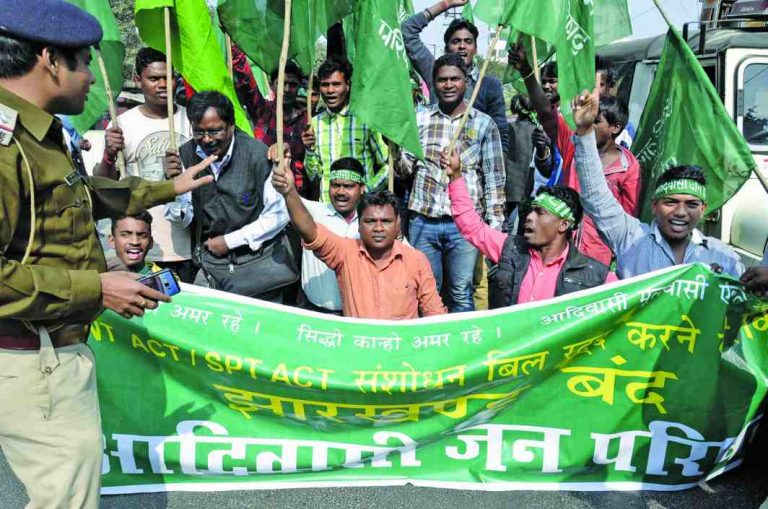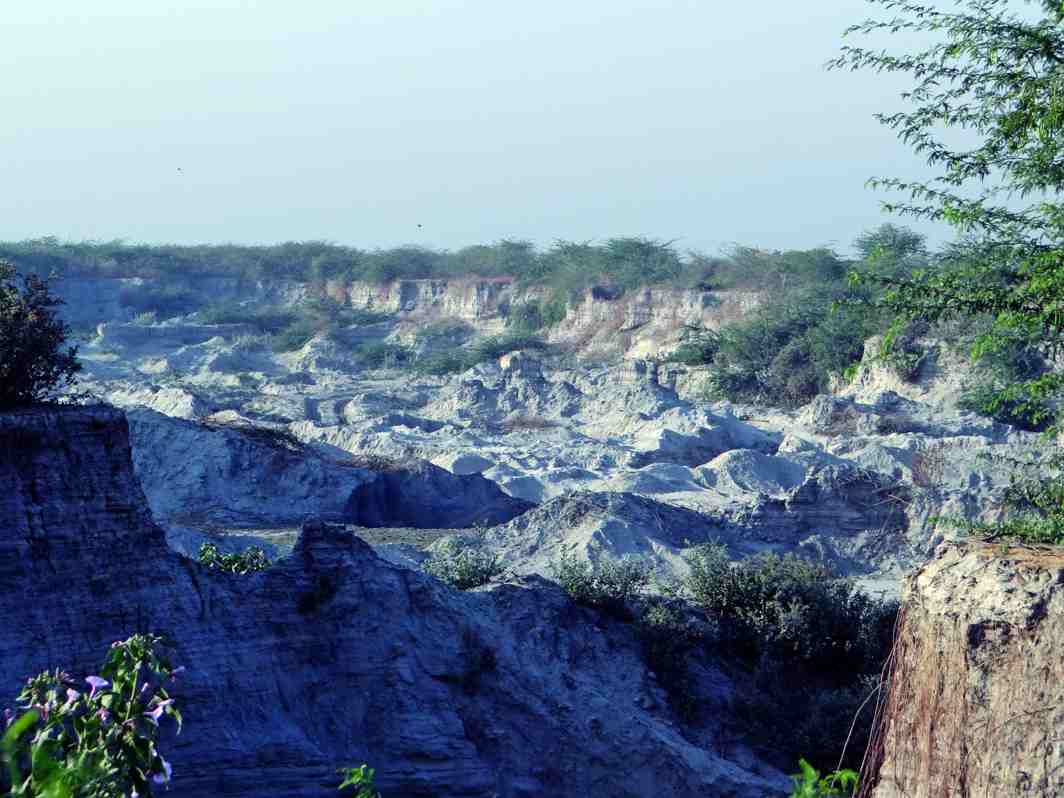
Indian banks are saddled with bad loans of over Rs 9.64 lakh crore. Could these have been avoided if due diligence of environmental and social risks of the projects had been done?
~By Ramesh Menon
How often have we come across banks in India drowning under the weight of non-performing assets (NPAs)? How often have we seen defaulters, mainly industrialists or entrepreneurs, go scot-free after taking huge loans and not repaying them? Why do taxpayers have to bear the brunt of NPAs that are ultimately written away? The answer is blowing in the wind.
Indian banks are struggling today to survive as they are saddled with bad loans of over Rs 9.64 lakh crore. According to the ministry of finance, the non-performing accounts of the top 20 public sector banks last year was Rs 1.54 lakh crore. Infrastructure, iron and steel, mining, textiles and aviation sectors accounted for more than 52 percent of NPAs and restructured loans in scheduled banks.
One of the principal reasons why banks got saddled with these bad loans is because very little investigation was done on the projects being financed. As applicants had an industrial or entrepreneurial background and were politically well-connected, they muzzled their way into nationalised banks to secure loans. Had the banks done the required amount of due diligence, they would have found many reasons for rejecting the loan applications.
Many projects were inordinately delayed as they did not get timely approvals due to inadequate project planning, gaps in environmental impact assessment and violation of mandated procedures. Many suffered serious setbacks due to judicial intervention that came after the affected parties filed cases regarding environmental damage, displacement and compensation. These could have been avoided had the banks resorted to time-tested environmental and social risk management.

” font_container=”tag:p|font_size:20px|text_align:left|color:%23000000″ google_fonts=”font_family:Open%20Sans%3A300%2C300italic%2Cregular%2Citalic%2C600%2C600italic%2C700%2C700italic%2C800%2C800italic|font_style:700%20bold%20regular%3A700%3Anormal”]
Toronto-based Nandakumaran Menon, a former senior bank manager, has a different take on this. He told India Legal: “After the Coalgate investigations, there was a kind of policy paralysis as government officials were hesitant to take decisions. In fact, banks relied on the clearances obtained by the investor entrepreneurs. Most of the projects had all pre-approvals, but the lack of transparency behind the approvals was the reason for courts’ intervention. No amount of social or environmental diligence can prevent the opaque process, which, in turn, caused cancellation of approvals.”
Having monitored projects that became NPAs, the Centre for Science and Environment (CSE) said that both environmental and social issues must be considered by banks before they part with their money. Otherwise, there are chances that the project will fail or ultimately not take off, it said.
According to CSE, between 2007 and 2014, “almost all environmental clearance applications were cleared” while “94 percent of proposals seeking forest clearance were approved”. Think about it. Many of them will run into trouble sooner or later.
Mumbai-based Arun Shandilya, former managing director of the State Bank of Bikaner, told India Legal: “When giving out loans, banks should carefully look at the environment factors. There are standard procedures which require banks to do this. But due to external circumstances, some of this may not have been done the way it should. Just examining whether the borrower is trustworthy will reduce the chances of failure. What is worrying is the new trend of demanding waiver of loans. Uttar Pradesh did it and now, Maharashtra is under pressure to give in to a similar waiver. This is very detrimental as it is ultimately the taxpayer’s money that is being wasted.”
In May, President Pranab Mukherjee passed the Banking Regulation (Amendment) Ordinance, 2017, that conferred more powers on banking regulators to hopefully tackle the NPA crisis. The Ordinance pointed out that stressed assets in the banking system had reached unacceptably high levels calling for urgent measures. It may seem perfect on paper but does not fix the elementary problem of why banks are riddled with NPAs.
An analysis by CSE reveals that delay in obtaining approvals is mainly due to inadequate project planning, poor assessment, concealing critical issues and land-related conflicts originating from inadequate compensation, resettlement and rehabilitation benefits and ownership rights settlement. One of the gaps in the loan appraisal process is the lack of consideration given to environmental and social risks prior to financing.
Social risk assessment must be made a mandatory part of appraisal of any loan application as it is becomes a kind of insurance against what otherwise would be a definite failure. Then only can loans for projects that have obvious social and environmental loopholes be plugged before they are okayed.

Take, for example the Rs 12,000-crore Nagarjuna Thermal Power Plant in Kakarapalli in Andhra Pradesh. It secured an environmental clearance in 2009. But in 2010, residents of the area started protests. It was only after three protestors were killed in one of the protests that the National Environment Appellate Authority suspended clearance for the project. A year later, the National Green Tribunal ruled that the environmental clearance would be suspended till its directions were complied with. In 2015, the state government cancelled the land allotment for the power station. By then the company had spent Rs 1,300 crore. This is what poor planning and assessment does to projects.
Similarly, protests by farmers derailed the Rs 15,400 crore Tata Steel’s Kalinganagar project in Odisha. A memorandum of understanding was signed by the company and the Odisha government in 2004 to set up a steel plant with a capacity of six million tonnes a year. The seven-year delay because of the protests increased the project cost to almost Rs 25,000 crore.
Then there was the Coastal Andhra Power Limited Ultra Mega Power Project costing Rs 17,400 crore. It was cleared in 2007, but construction was halted. Reason: Land acquisition issues and inadequate assessment of fuel linkages.
Lax bankers
The Securitisation and Reconstruction of Financial Assets and Enforcement of Security Interest (SARFAESI) Act has provisions for banks to take legal recourse to recover their dues. When a borrower defaults and his account is classified as NPA, the secured creditor has to issue a notice to the borrower giving him 60 days to pay the dues. If the dues are not paid, the bank can take possession of his assets and can lease or sell it.
If the bankers had been a bit more socially responsible and not indiscriminately used the SARFAESI Act, India could have perhaps avoided the tragedy of farmers committing suicide due to losing their land and feeling humiliated. Its full force is felt by the small entrepreneur who does not have the wherewithal to hire expensive lawyers or move courts, even while influential promoters escape its rigour.
Small entrepreneurs and farmers found their assets were quickly repossessed and sold. In the pro-cess, many promising little ventures died with little support from bankers.
” font_container=”tag:p|font_size:20px|text_align:left|color:%23000000″ google_fonts=”font_family:Open%20Sans%3A300%2C300italic%2Cregular%2Citalic%2C600%2C600italic%2C700%2C700italic%2C800%2C800italic|font_style:700%20bold%20regular%3A700%3Anormal”]
Former RBI Governor Raghuram Rajan had stressed that NPAs were due to delays in statutory and other approvals for projects under implementation, aggressive lending practices, laxity in credit risk appraisal, poor loan monitoring in banks, lack of appraising skills for projects that need specialised skills and finally, willful default, loan frauds and corruption.
As applicants were politically well-connected, they muzzled their way into nationalised banks to secure loans and compensation.
The Ordinance permits the RBI to issue directions to any banking company to initiate insolvency resolution process in respect of a default, under the provisions of the Insolvency and Bankruptcy Code, 2016. It also allows it to issue directions to banking companies for resolution of the stressed assets from time to time. But this is hardly going to prevent more projects from becoming white elephants. It is time public sector banks restructure themselves and change their policies to be more development-oriented than just copying global trends of lending and growing.
Mani Iyer who spent nearly two decades as a banker in Gujarat, told India Legal: “Globalisation of the banking system in India has resulted in banks losing direction. A few years ago, we were seen as development bankers. Now we are just lenders who are being strangulated by rules. A banker today has to relook the investment and lending model. If any project is people-oriented, it will get their support and will be sustainable. We must understand this small truth.”
He adds: “If bankers had stuck to the purpose for which they were conceptualised and nationalised, they would not have choked on their own bile. The NPA crisis is of their own making. Bankers pampered the High Networth Individuals with discounts that were spent on their vanity. Instead, if they had questioned the environmental and social impact of the projects, they would not have landed in the present mess.”
That is the hard truth.

